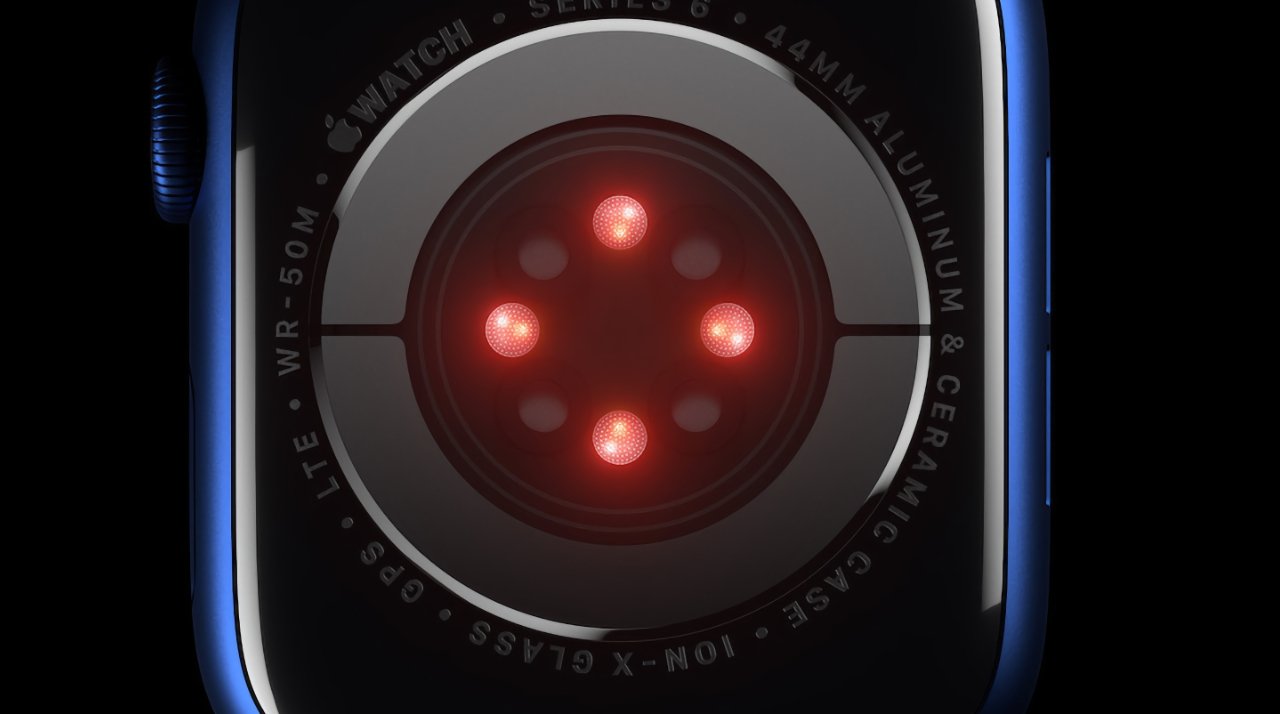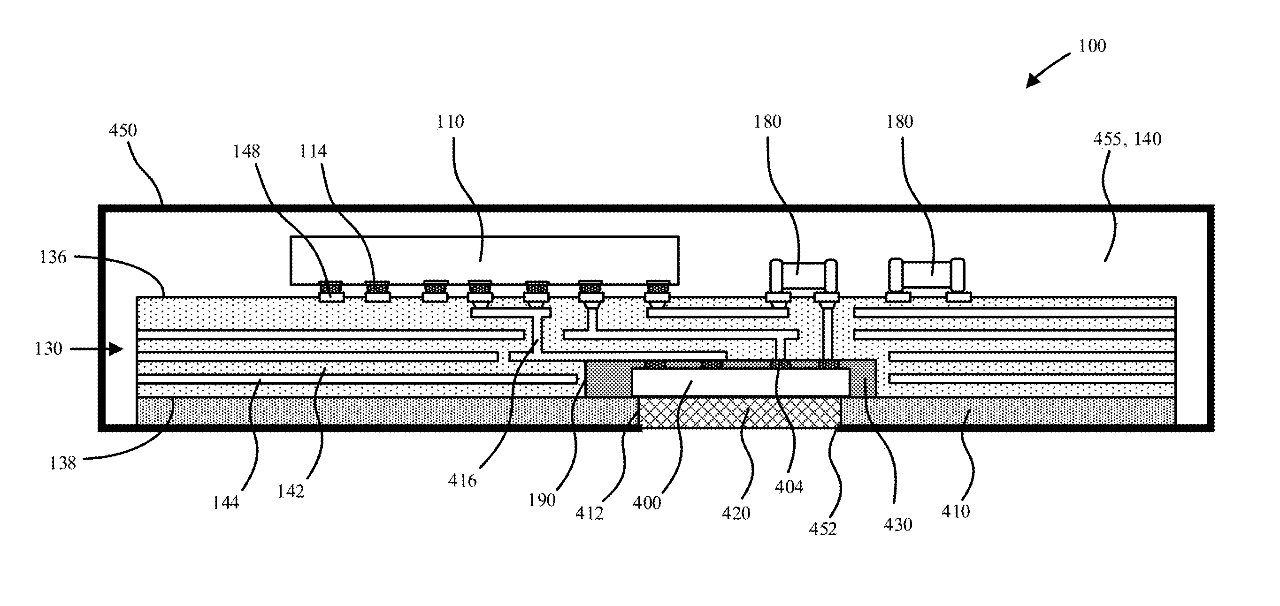Apple Watch body temperature sensor research underway since at least 2019
Claims that a future Apple Watch will be able to sense the temperature of the wearer's skin have been further backed up by a newly-revealed patent application.

I'm afraid I can't do that, Dave.
It's certain that Apple will add ever more health features to Apple Watch, but in particular it has been rumored that it could gain a skin temperature sensor. This is unlikely to be in this year's "Apple Watch Series 7," but may arrive in 2022.
Now "Packaging Technologies for Temperature Sensing in Health Care Products," shows that Apple has been working on the sensor for some time. It's a newly revealed patent application which was originally filed in 2019.
The term Apple Watch is not mentioned in the application's 8,500 words, nor are any of the drawings more than generic. However, alongside references to a broad range of possible applications, the patent application is concentrated on wearables.
"Wearable health devices are increasingly integrating a broad variety of sensors to better monitor heath status of users," it says. "[And skin] temperature is one of the vital signs for patient's health."
Apple says that the development of "packaging technologies such as system in package," has meant that it is "possible to develop miniaturized systems and devices." This patent application describes one system, and multiple variations, which could sense temperature.
"For example, the temperature sensor packages may be secured within (e.g. within a housing) of a portable electronic device, or secured to a fabric of a wearable device," it continues.
Apple's patent application splits its descriptions between "temperature sensor packages [that] may be characterized as suitable for touch or non-contact temperature sensing."
The two do not appear, though, to be all that different. Both describe temperature sensors, it's just that one could be on the surface of a device, or another could be embedded further within it.
"[Embedding] the transducer may provide save spacings," says Apple. "Additionally, short and flexible routing can be provided between the transducer and chip for integration into different subsystems for non-contact temperature sensing."
The patent application is concerned with practicalities of how a surface or touch sensor could work, and how an embedded one could sense the temperature data. It's less concerned with how these techniques would eventually be used within a device like the Apple Watch, but it does state that embedding is possible.
"In operation, the temperature sensor package... can be located at a working distance from a source, such as body skin of a target subject, allowing constant temperature monitoring," says the patent application. "Physical contact between the source and temperature sensor package is not required."

Detail from the patent application showing one configuration of a temperature sensing package
In the case of a touch sensor, it's easy to see that an Apple Watch wearer's skin is always in touching contact with the device. But then the back of the Apple Watch is already replete with health sensors.
Regardless of quite how Apple can add a skin temperature sensor, though, the company has been working on it. Five inventors are credited on the patent application, including Kishore N. Renjan, and Manoj Vadeentavida.
Their previous related work includes a granted patent regarding how to shield a given compartment or module within an electronic device, in order to protect it from environmental interferance.
Keep up with everything Apple in the weekly AppleInsider Podcast -- and get a fast news update from AppleInsider Daily. Just say, "Hey, Siri," to your HomePod mini and ask for these podcasts, and our latest HomeKit Insider episode too.If you want an ad-free main AppleInsider Podcast experience, you can support the AppleInsider podcast by subscribing for $5 per month through Apple's Podcasts app, or via Patreon if you prefer any other podcast player.AppleInsider is also bringing you the best Apple-related deals for Amazon Prime Day 2021. There are bargains before, during, and even after Prime Day on June 21 and 22 -- with every deal at your fingertips throughout the event.

I'm afraid I can't do that, Dave.
It's certain that Apple will add ever more health features to Apple Watch, but in particular it has been rumored that it could gain a skin temperature sensor. This is unlikely to be in this year's "Apple Watch Series 7," but may arrive in 2022.
Now "Packaging Technologies for Temperature Sensing in Health Care Products," shows that Apple has been working on the sensor for some time. It's a newly revealed patent application which was originally filed in 2019.
The term Apple Watch is not mentioned in the application's 8,500 words, nor are any of the drawings more than generic. However, alongside references to a broad range of possible applications, the patent application is concentrated on wearables.
"Wearable health devices are increasingly integrating a broad variety of sensors to better monitor heath status of users," it says. "[And skin] temperature is one of the vital signs for patient's health."
Apple says that the development of "packaging technologies such as system in package," has meant that it is "possible to develop miniaturized systems and devices." This patent application describes one system, and multiple variations, which could sense temperature.
"For example, the temperature sensor packages may be secured within (e.g. within a housing) of a portable electronic device, or secured to a fabric of a wearable device," it continues.
Apple's patent application splits its descriptions between "temperature sensor packages [that] may be characterized as suitable for touch or non-contact temperature sensing."
The two do not appear, though, to be all that different. Both describe temperature sensors, it's just that one could be on the surface of a device, or another could be embedded further within it.
"[Embedding] the transducer may provide save spacings," says Apple. "Additionally, short and flexible routing can be provided between the transducer and chip for integration into different subsystems for non-contact temperature sensing."
The patent application is concerned with practicalities of how a surface or touch sensor could work, and how an embedded one could sense the temperature data. It's less concerned with how these techniques would eventually be used within a device like the Apple Watch, but it does state that embedding is possible.
"In operation, the temperature sensor package... can be located at a working distance from a source, such as body skin of a target subject, allowing constant temperature monitoring," says the patent application. "Physical contact between the source and temperature sensor package is not required."

Detail from the patent application showing one configuration of a temperature sensing package
In the case of a touch sensor, it's easy to see that an Apple Watch wearer's skin is always in touching contact with the device. But then the back of the Apple Watch is already replete with health sensors.
Regardless of quite how Apple can add a skin temperature sensor, though, the company has been working on it. Five inventors are credited on the patent application, including Kishore N. Renjan, and Manoj Vadeentavida.
Their previous related work includes a granted patent regarding how to shield a given compartment or module within an electronic device, in order to protect it from environmental interferance.
Keep up with everything Apple in the weekly AppleInsider Podcast -- and get a fast news update from AppleInsider Daily. Just say, "Hey, Siri," to your HomePod mini and ask for these podcasts, and our latest HomeKit Insider episode too.If you want an ad-free main AppleInsider Podcast experience, you can support the AppleInsider podcast by subscribing for $5 per month through Apple's Podcasts app, or via Patreon if you prefer any other podcast player.AppleInsider is also bringing you the best Apple-related deals for Amazon Prime Day 2021. There are bargains before, during, and even after Prime Day on June 21 and 22 -- with every deal at your fingertips throughout the event.

Comments
As I understand it, the oxygen saturation sensor in Watch series 6 can be set to monitor continuously—I hope the temperature sensor will be implemented in a similar manner.
—the enormous health care value of Watch is the non-stop monitoring of reliable data (which is another reason why all-day-battery is important).
Skin temperature is obviously not uninteresting, but medically speaking, measurement of other than core temperature directly, is only valid as a screening tool and clinical decisions should be based on core temperature.
—a long winded attempt at saying:
skin temperature is a screening tool and it is therefore relevant.
In short: I agree.
…, nothing to see here, move on 👀
"Screening tool" is the concept I was looking for and not expressing well. Skin temp is a screening tool, not a diagnostic one. Thanks.
—I’m rocking the series 4.
In hindsight, I should have used something other than “continuously”, as this would only be meaningful in a hospital setting (happens when you can’t separate off-duty activities from your clinical research 🙈).
My fear was that the saturation sensor (and the rumored skin temperature sensor) would require manual activation, similar to the ECG. In this context, twice an hour is acceptable but not impressive. Battery life is the likely culprit.
Sensor accuracy/reliability in a workout setting (both types of sensors) is probably a bit iffy, and so a higher sampling frequency (I would suggest a variable frequency similar to the heart rate sensor) wouldn’t provide further insight into workout activities—thus, a reasonable compromise given that all sensors are rendered pointless while the Watch is taking a break on its charger!
Well—in an ideal world—yes, sure 😉